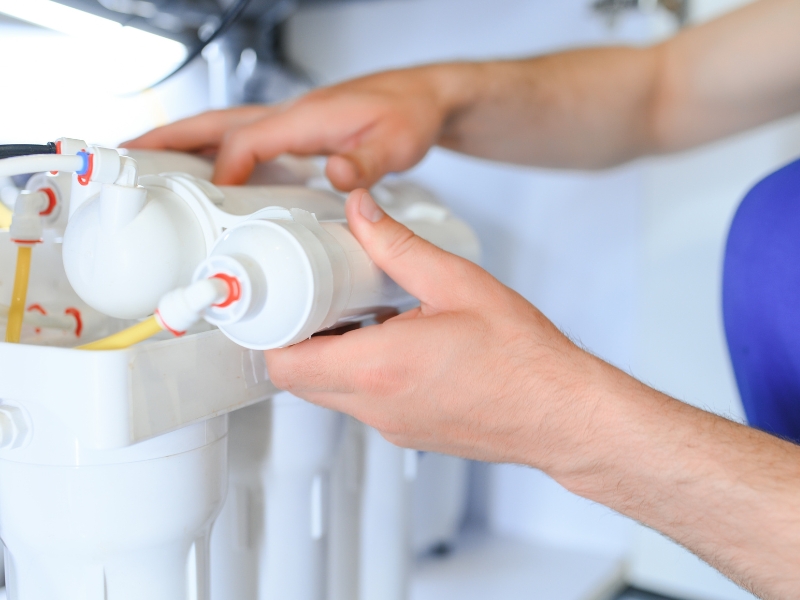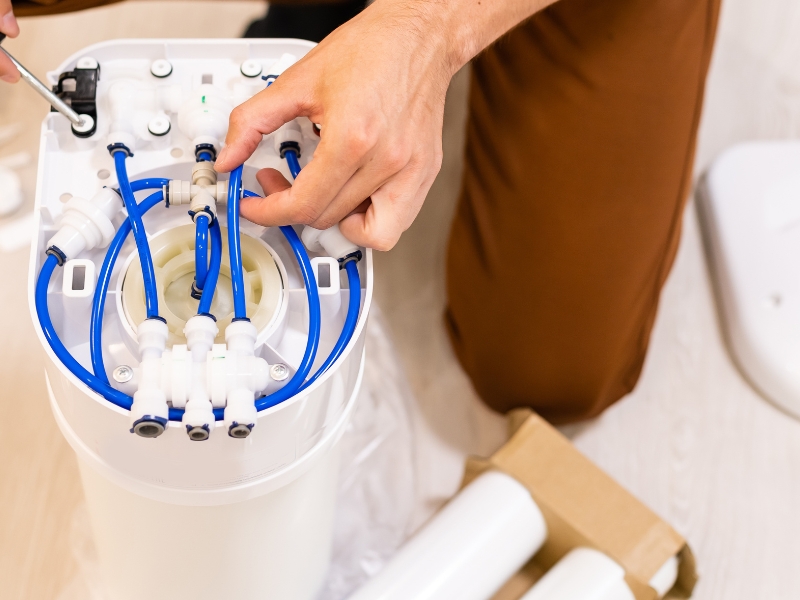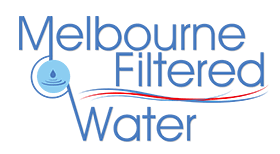
Routine inspections on a Zip tap system can prevent minor faults from developing into costly repairs, directly influencing your Zip tap service costs through early intervention and regular upkeep. Catching leaks, monitoring filter life, and assessing pressure help keep components running smoothly and reliably. This article examines how regular checks reduce overall costs, identifies key factors to consider, and outlines how to structure service plans that safeguard your investment.
What factors influence the ZipTap service cost in Melbourne?
Labour fees, replacement parts, system complexity, and installation layout all impact the cost of the zip tap service in Melbourne. Understanding cost drivers helps you anticipate servicing bills. When scheduling a zip tap service through Melbourne Filtered Water, factors such as accessibility, unit model, and wear level will affect the cost. This clarity helps property owners manage costs before they escalate.
- Call-out/labour charges: A technician’s travel and hourly rate form your baseline cost.
- Replacement parts and wearables: Components such as filter cartridges, O‑rings, and connectors add up.
- Extent of work required: Minor maintenance is less expensive; major repairs, such as those involving pumps, sensors, or electronics, increase the cost.
- Accessibility & installation layout: Hard‑to‑reach installations demand extra effort and time.
- Model sophistication: Units with more functions (e.g. boiling, sparkling) have more parts to service.
- Service plan or warranty status: If under a service agreement, certain parts or labour may be covered.
| Cost component | Key variables influencing cost |
| Labour & call‑out | Distance, technician time, market rates |
| Parts/consumables | Model‑specific components, frequency of replacement |
| Repair depth | Whether it is only minor maintenance or a major repair |
| Installation layout | Ease of access, hidden panels, plumbing complexity |
| Model complexity | Number of functions and subsystems |
In summary, your total servicing bill depends on a mix of labour, parts, repair scope, and system complexity. Regular checks help minimise surprises and stabilise costs over time.
Why does filter replacement play a role in zip tap service cost?
Neglecting filter changes can cause system strain, resulting in more frequent servicing and higher overall costs. Filters are the first line of defence in maintaining system health, and neglecting them leads to compounding issues. Here are the connections:
- Clogged filters create strain on pumps and valves, which in turn increases wear.
- Mineral deposits accumulate more rapidly without timely replacement due to the presence of hard water.
- Using non‑genuine cartridges may reduce the lifespan of surrounding parts.
- Frequent replacement cost accumulates with repeated swaps rather than scheduled maintenance.
- Delayed replacement can cause downstream damage to more expensive parts.
You can reduce risk by following the manufacturer’s filter change intervals and scheduling filter health checks during each service. Additionally, collecting filter replacement history helps with accurate budgeting. Over time, consistent filter care reduces the burden on internal components and keeps your overall servicing cost predictable.
How do different Zip models affect the average service cost?
The number of functions and parts in a Zip model directly influences the time and cost of servicing. Different models vary in complexity, which directly affects maintenance demands. Here are the effects:
- Simple chilled‑only models have fewer parts and lower service complexity.
- Multi-function taps (boiling, sparkling, ambient) include additional subsystems that require regular checks.
- High-throughput/commercial models endure greater stresses and require more frequent servicing.
- Compact designs may compress components tightly, increasing labour time for servicing.
- Advanced controls/sensors add electronics that may need recalibration or replacement.
In effect, the more features a Zip model has, the higher its ongoing service demands. However, by structuring regular inspections and preventive maintenance schedules, you can effectively manage costs, even for complex units. With disciplined servicing, complexity becomes manageable rather than costly.
How can professional servicing lower the long-term cost of the zip tap service?
Professional servicing ensures early detection of problems, extends system life, and prevents expensive emergency repairs. Hiring a qualified technician provides value beyond the immediate repair. Here are the benefits:
- Early detection of wear or leaks prevents minor problems from escalating into significant failures.
- The use of genuine components ensures compatibility and extends longevity.
- Accurate calibration and tuning ensure optimal performance with less strain.
- Comprehensive checklist inspections identify hidden issues in plumbing, electrical systems, and seals.
- Warranty compliance is maintained when certified professionals perform maintenance.
- Preventive servicing schedules smooth costs over time, reducing sudden spikes.
By relying on experts, your system remains reliable and less prone to sudden breakdowns. Consider reliable methods for managing the Zip Tap service cost effectively, making annual or biannual service a strategic investment rather than a recurring uncertainty.
What impact does water quality have on ongoing maintenance needs?
Poor water quality accelerates internal wear, increasing the frequency and cost of Zip tap servicing. Water quality is a silent driver of wear and tear in Zip systems. Here are ways it plays a role:
- High mineral content/hardness accelerates scaling and clogs internal passages.
- Sediment and particulates increase filter wear and cause abrasions.
- Chlorine, iron or chemicals may degrade seals or internal linings.
- Fluctuating supply quality forces variable load and stress on components.
- pH imbalances or corrosive inputs can accelerate corrosion of metal parts.
Understanding Victoria’s regulatory framework for safeguarding long-term water quality standards helps maintain baseline supply standards; however, local variations persist. By including pre-treatment (coarse filters, softening) and monitoring supply quality, you protect your Zip unit and minimise unexpected servicing costs. Over time, integrating water quality management into your maintenance regime reduces strain and keeps servicing costs under control.
Why is preventative maintenance better than reactive repairs?

Waiting for failure often proves more expensive than staying ahead of it. Here are the reasons:
- Emergency repairs carry premium labour fees beyond scheduled rates.
- Secondary damage often occurs; leaks can harm cabinetry, plumbing, or electronics.
- Replacement parts may be delayed or overpriced in urgent scenarios.
- System downtime is disruptive and may force less ideal substitutions.
- Cumulative stress weakens the lifespan of the system, leading to an earlier need for full replacement.
Preventive maintenance ensures regular service cycles, prevents emergencies, and maintains system integrity. Over the long haul, this approach typically costs less than reacting only when things break.
Final thoughts on managing your ZipTap service cost effectively
Regular checks, disciplined filter replacement, and relying on professionals provide the backbone for cost control. By funding predictable maintenance rather than chasing sudden breakdowns, you create a stable servicing plan. To explore options tailored to your setup, consider learn what Melbourne Filtered Water offers for Zip tap maintenance. Adopt preventative strategies now, and keep your Zip tap system operating efficiently for years to come.
